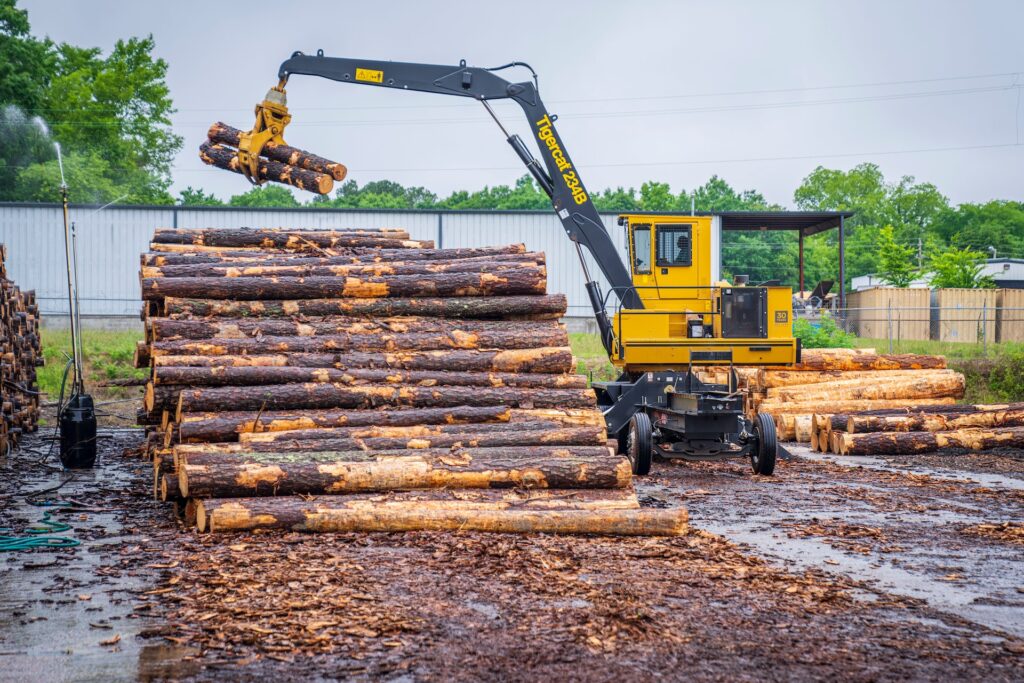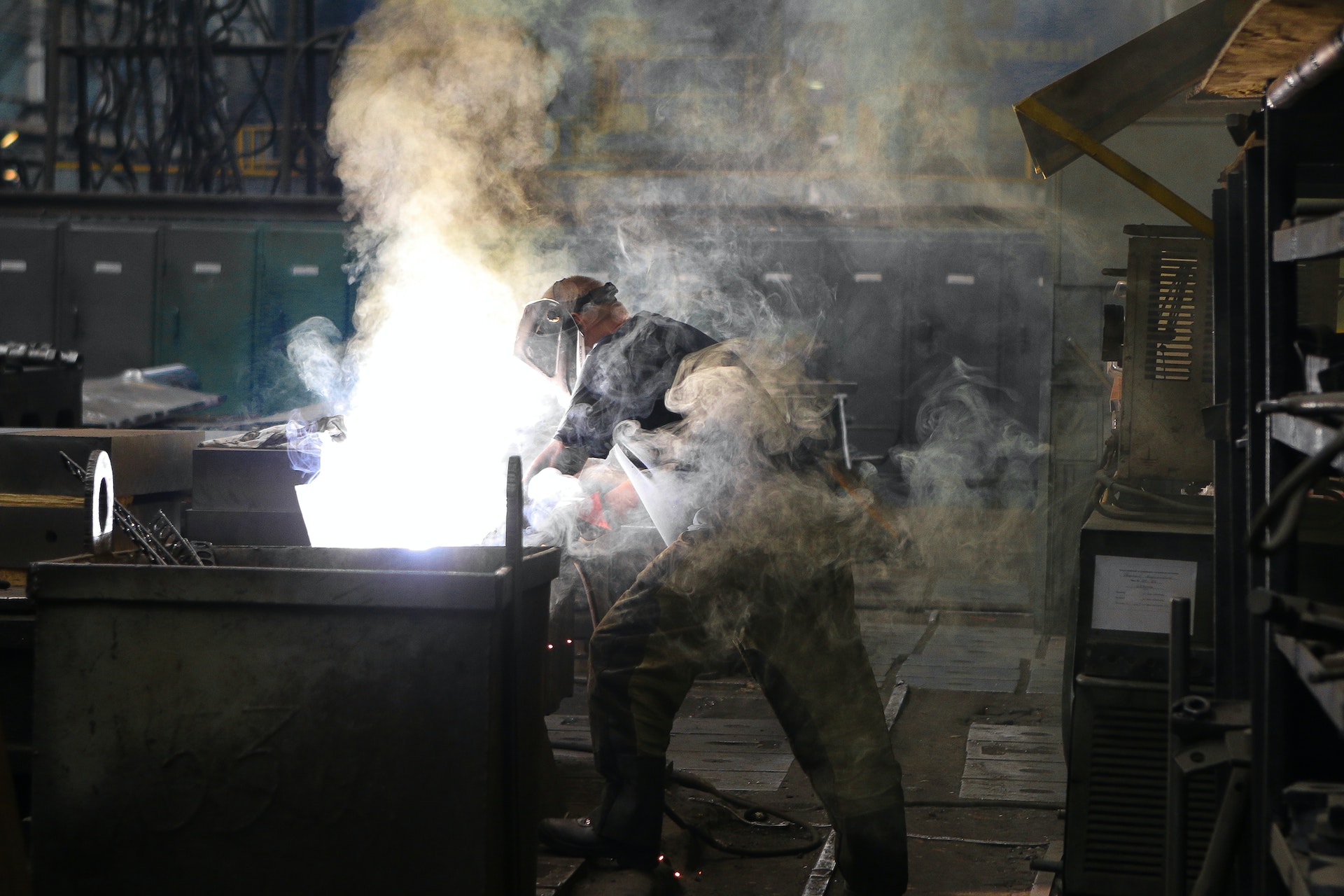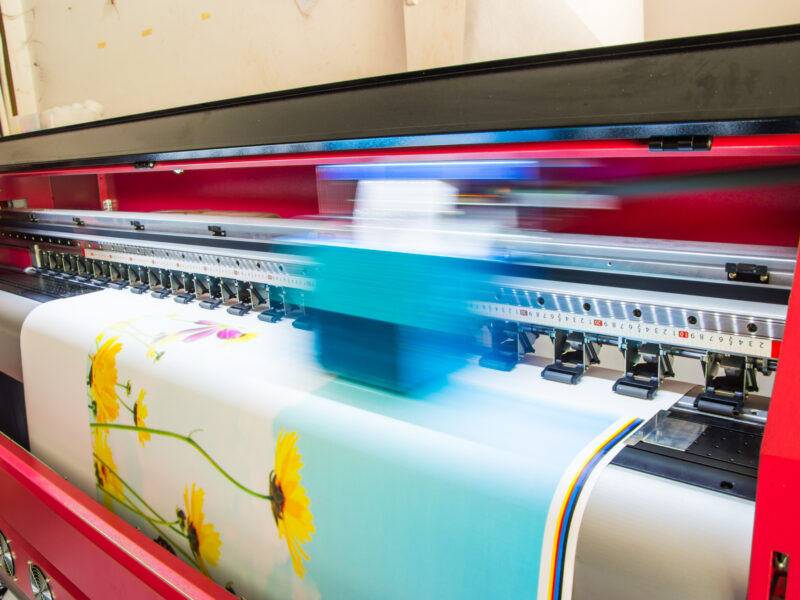Capital goods are the backbone of the global economy. They are our batteries, vehicles, and industrial machines. Industries big and small rely on capital goods to provide them with tools that make essential operations possible. Now you must be wondering, “What companies are in the capital goods field”?
Giants like Siemens, Caterpillar, and General Electrics are the most prominent examples of companies that produce and sell capital goods, but there are many others. While some are world-famous brands that anyone would recognize, others are of no less importance. Capital goods companies rule the world.
Before we introduce the top players in the field, we’ll briefly explain what capital goods are and how they differ from consumer goods. In today’s article, we’ll also discuss the prospects of getting a job in capital goods and mention some of the most popular, profitable, and important sectors in this field.
Contents
Capital goods explained

Capital goods is an umbrella term for all products businesses use to produce other products and services. You could say that capital goods are business capital equipment, which can be anything from computers to airplanes. This might not be obvious, but capital goods are also land and buildings.
Everything that makes manufacturing other goods possible can fall under the broad category of capital goods. The crucial distinction you should make is that capital goods are not raw materials. They are man-made machines, tools, structures, and vehicles that businesses use for different purposes.
A few examples of capital goods are:
- Land
- Buildings
- Manufacturing equipment
- Vehicles
- Heavy duty machinery
- Computers
- Tools
- Engines
Though capital goods can be more or less durable, they are typically long-term physical assets that represent a significant investment that businesses will use for many years. Large companies have a special department with employees tasked only with purchasing capital goods, called procurement.
As we’ve just mentioned, there are two types of capital goods – non-durable and durable.
Non-durable
As the name suggests, non-durable capital goods can be any piece of business capital equipment that doesn’t last for very long. For example, non-durable capital goods are small tools like screwdrivers, hammers, or even Hilti drills (though they are known to last for 20 years). Computer equipment is also a good example of non-durable capital goods. Compared to durable goods, they are far less expensive.
Durable
As you might have guessed, durable goods are typically large manufacturing items, complex engines and technology, heavy-duty machines, and vehicles. These capital goods usually cost a lot, but they provide a great return on investment (ROI) for businesses that choose to invest in them. They are essential in large-scale manufacturing and many other industries that we rely on for our survival and everyday comfort.
The difference between capital goods and consumer goods

While capital goods are produced by businesses for other businesses, consumer goods are designed and manufactured for commercial use. Food and clothing are consumer goods. It’s something that people can buy and own. Consumer goods are, therefore, also called final goods and are made for the end user.
The distinction between capital and consumer goods is important from a business perspective. As a seller, you can choose to resell one or the other to a varying degree of risk. As you will learn later on, some types of consumer goods go in and out of demand, while capital goods are always indispensable.
However, since capital goods are complex and more difficult to produce than most consumer goods, they are also more durable and expensive. Even with electronics or vehicles, most businesses opt for high-quality, long-term investments. Consumers buy goods that are currently trending or affordable.
Is the capital goods field a good career choice?

Capital goods are indispensable for the healthy and efficient operation of the world’s biggest economies and most valuable industries. Though there are always exceptions to the rule, there’s rarely a time when capital goods are not needed. It is a dynamic but stable field with unparalleled potential for growth.
A recent study by Roland Berger provides a great illustration of this.
According to Roland Berger’s research, capital goods is one of only a handful of fields that have not shown any signs of slowing down during the COVID-19 pandemic. Even better, capital goods’ top and bottom lines both grew by 9.8% in 2022. At this moment, the industry is worth $1.72 trillion in revenue.
Capital goods are making enormous progress year by year, which opens up exciting opportunities for job seekers of different backgrounds and specialties. There is always a place for hard-working people in this field, particularly for those with engineering, software development, and manufacturing expertise.
The Pros and Cons of Getting a Job in Capital Goods
Some of the most popular and best-paying positions in capital goods in 2022 are:
- Engineering manager
- Software Developer
- Mechanical engineer
- Manufacturing director
- Warehouse worker
- Robotics engineer
- Electrical engineer
- Operations Manager
- Manufacturing Engineer
In addition to being well-paid, jobs in this field offer great opportunities for professional growth and career advancements. High-paying entry-level roles are also available, but they usually require a college degree in engineering or development. With the exemption of labor-intensive roles such as workhouse and factory line jobs, these careers are professionally rewarding and offer an outstanding work-life balance.
Different Sectors in Capital Goods

There are many different sectors in the capital goods field. Most of them are high-earners, as they power some of the most critical industries. As you’ll see, these are the goods businesses use daily – whether to produce consumer goods (B2C) or provide products and services for the B2B sector.
The most noteworthy sectors in the capital goods field are:
Tools sectors
As a civilization, we owe all our progress to tools. Where would we be, and what would we do without essential tools such as screwdrivers and hammers? All tools come from the tools sectors, which equips the widest array of other sectors and industries. The portable tools market is worth $80.4 billion in 2022.
Textile sector
With clothing as consumer goods, the textile sector is one of the biggest contributors to the global economy. However, this industry is even more important as the capital goods manufacturer, as it provides businesses with fibers and synthetics. The global textile market is worth $577.83 billion in 2022.
Power technology sector
The power technology sector is a great example of the key role that capital goods play in our everyday lives, even though they are not intended for commercial use. This sector provides vital technology and infrastructure to power plants, which in turn power our homes and businesses with electricity.
Networking tools and equipment

Cables, routers, and other tools and equipment are essential for interconnecting people, devices, and the Internet. In these digital times, no business could do without them. Even old-school manufacturers of handcrafted goods rely on phones and the Internet to bring in new customers and keep them.
Music instrument sector
The global musical instruments market has grown to $13.25 billion in 2022. Though significantly smaller than, say, the textile sector, this industry equips millions of businesses with instruments and technology needed to produce sound. Music helps all types of businesses create engaging customer experiences.
Machinery sector
With new and improved machinery, industries would not be able to work efficiently, let alone make progress. Complex machines are at the center of construction, agriculture, manufacturing, and many other industries that both consumers and businesses depend on. The machinery sector is invaluable.
Infrastructure
Perhaps the most important capital goods sector, infrastructure, is what makes it all possible. It envelopes transportation, critical public services, and communication networks. Roads, bridges, railroads, airports, seaports, power grids, water supply, the Internet, and telephones wouldn’t exist without infrastructure.
Furniture

Depending on its use, furniture belongs to both consumer and capital goods. Chairs, tables, and beds are primarily designed for homes, but they are just as important in business offices and public facilities that range from schools and hospitals to hotels and cafes. Without furniture, our lives wouldn’t be the same.
Electronics sector
This year, the global electronics market has grown to $1,152.23 billion. Similarly to the furniture sector, this industry produces both consumer and capital goods. It’s an integral part of the modern-day way of living, equipping households, businesses, and public services with computers and many other devices.
Construction sector
The construction sector works hand in hand with the construction industry to streamline and optimize how buildings and other large-scale objects are being built. It provides the tools and machinery construction businesses use daily, from buckets and belt conveyors to cranes and bulldozers.
Chemicals sector
Chemicals are also capital goods – they are used to produce everything from food (land fertilizers) to cosmetics (pharmaceuticals). Other industrial chemicals, detergents, and polymers participate in various manufacturing processes as well, making the chemicals sector a $4,654.14 billion global market in 2022.
Automobile sector

The automobile sector isn’t limited to cars. It produces the engines, bodies, and other vital components for all types of motor vehicles. Buses, trucks, electric cars, and hybrids are all manufactured in this sector, including construction and agriculture vehicles. In 2022, the automobile industry is worth $100.9 billion.
Aerospace sector
The capital goods that are involved in the production of cutting-edge technologies and materials used for air and space travel come from the aerospace sector. The products created by aerospace components manufacturers are an excellent example of durable capital goods – they are high-end, expensive, and designed strictly for public and business use.
What Companies Are in the Capital Goods Field?

When you stop to think about what companies are in the capital goods field, acclaimed brands like Ford Motors and General Electrics come to mind. You’ve probably heard about many other hugely successful companies on this list, too, without realizing that they belong to the ever-expansive capital goods field.
Some of the most popular companies in the capital goods field include:
Raytheon Technologies
Based in Arlington, Virginia, Raytheon is one of the most profitable aerospace and defense companies in the world. It produces all kinds of capital goods used by airplane companies and for government defense programs, including aircraft engines, satellites, and drones. Raytheon employs 174,000 people in the US.
Siemens
Germans are world-famous producers of capital goods, and Siemens is their national treasure. Officially, Siemens classifies as an “Automation company.” It designs and manufactures automation devices used in all types of industries, from electrical sockets and computers for small businesses to airplane systems.
United Rentals, Inc
With a net worth of $24.69 billion and more than 200,000 employees worldwide, United Rentals is the world’s leading equipment rental company that also sells and services various types of equipment. For the most part, this capital goods giant provides industrial, construction, and homeowner equipment.
3M

Headquartered in Saint Paul, Minnesota, 3M is a multinational conglomerate company that produces more than 60,000 different types of products – medical, dental, and orthodontic products, insulating materials, abrasives, adhesives, and more. There are currently around 95,000 employees working in 3M.
Boeing
Boeing is the world’s largest aerospace company. Its 140,000 employees work hard on designing, manufacturing, and selling all kinds of air travel, defense, and security-related capital goods. Boeing’s most recognizable product is a commercial jet, but it also produces rockets, missiles, and satellites.
General Electric (GE)
GE is a capital goods conglomerate so large that it spans numerous sectors and industries. It is almost synonymous with healthcare and renewable energy, though it also dabbles in evaluation. Founded some 150 years ago, General Electric is now worth around $93.20 billion and employs about 168,000 people.
Lockheed Martin
Lockheed Martin is one of the leading providers of advanced defense systems and weapons for the US federal government agencies, especially the Department of Defense. More than one-fifth of Lockheed Martin’s 114,000 employees are veterans and reservists, but the company employs civilians as well.
Caterpillar (CAT)

Everyone knows about Caterpillar, though most people have never operated a CAT machine. The Illinois company specializes in construction machinery and equipment and excels in manufacturing locomotives, gas turbines, and diesel and natural gas engines. It counts around 107,700 employees all over the world.
Ford Motors
In 2023, Ford Motors will be a 120-year-old company with 183,000 employees and a net worth of $55.28 billion. Ford is one of the most recognizable automotive brands in the world, known chiefly for premium quality commercial cars. However, Ford also manufactures vans, trucks, and other vehicles for business use.
Honeywell International
Honeywell International is at the forefront of not one but four different capital goods sectors: building technologies, safety and productivity solutions, performance materials, and aerospace. This US-native multinational company is a Fortune 100 family business with roughly 103,000 employees.
TD Ameritrade
The only financial services company on this list, TD Ameritrade, is one of the largest stockbrokers in the world. The company’s most lucrative product is a digital trading and investment platform. TD Ameritrade is incredibly successful – with as little as 8,939 employees, it’s managed to record $1.8 trillion in assets.
Northrop Grumman

The comparison between TD Ameritrade and Northrop Grumman proves that capital goods companies come in all sizes. The Virginia-based aerospace and defense company has over 90,000 employees and a net worth of $80.79 billion. Northrop Grumman is hailed as a pioneer in aircraft and space travel.
ABB
This long-established Swiss company has been around for 130 years. In that time, ABB’s automation solutions have propelled the growth of numerous industries. It boasts around 110,000 employees in over 100 countries, all dedicated to the same goal – “enabling a sustainable and resource-efficient future.”
Conclusion
Whether you’re looking for a job in the capital goods field or are interested to know more about how these companies empower some of your favorite businesses, you cannot deny that there are some fascinating brands and products on this list. Capital goods are responsible for incredible benefits that we mostly take for granted. Without them, we wouldn’t have basic necessities such as electricity, buildings, or transport.
The capital goods field is arguably the most important employer in the world. Not only does it employ millions of people worldwide, but it also offers impressive opportunities for intellectual and career growth. Some of these companies are true visionaries in their sectors.
Their solutions are improving the quality of life and making the world smarter, brighter, and more secure. Capital goods are key to our progress.



